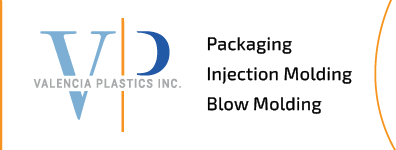Plastic molding is a manufacturing process used to produce large quantities of plastic parts and products. It involves shaping the material using a rigid hollow frame—i.e., mold. Once fully solidified, the material retains the shape of the mold after removal.
Industry professionals employ a wide range of plastic molding methods, depending on the part and production specifications. Each method offers its own advantages that make it suitable for different applications. Some of the most commonly employed include:
- Blow molding
- Compression molding
- Extrusion molding
- Injection molding
- Rotational molding
Regardless of the plastic molding technique employed, using a custom mold that fully meets the project specifications is key to successful production operations.

Design and Build Considerations for Custom Molds
When designing and building a custom mold for a plastic molding project, there are several factors to keep in mind to ensure it meets expectations. Some of the key considerations include:
Part Design and Size
Ultimately, plastic molding operations aim to produce specific parts or products. The shape, size, and features of these components determine the design of the mold used in the prototyping and production stages. Additionally, they influence which molding technique—and, consequently, which type of mold—is most suitable for the project. For example, injection molding is best for smaller part designs (approximately 10 inches by 10 inches by 10 inches or smaller).
Production Quantity
Custom plastic injection molding is best suited for projects that require high volumes of the same part. Typically, custom molding manufacturers require a minimum production quantity of 100,000 pieces. For these longer production runs, it is necessary to use more durable (and often more expensive) materials—such as steel—for the construction of molds. Otherwise, the mold may wear out in the middle of operations. Shorter production runs, such as prototyping or one-off production orders, often use less durable but cheaper materials—such as aluminum—for their molds to save on tooling costs.
Part Material
As indicated above, the material used in the construction of a mold is influenced by the length of production. In addition to this factor, the material used for the desired part or product also affects which material is ideal for a custom mold. For example, production operations that employ the use of materials that are abrasive or otherwise cause damage to the mold (e.g., fiberglass-filled plastic) require molds that are more durable and wear resistant.
Tooling Budget
The costs associated with designing and creating a mold make up a majority of the overall production costs for a plastic molding project. Many factors influence the cost of these stages, including design complexity, mold size, and construction material. Some general guidelines to follow to minimize tooling costs and stay within budget are:
- More complex mold designs (e.g., ones with multiple cavities) are initially more expensive than simple mold designs, but can save time and money in longer production runs as they generate more pieces per cycle
- Large molds are more expensive than small molds
- More durable molds are more expensive but more cost-effective for longer production runs, while less durable molds are cheaper and suitable for shorter production runs
Contact the Custom Plastic Molding Experts at Valencia Plastics Today
Founded in 2000, Valencia Plastics, Inc. specializes in manufacturing custom blow molded and injection molded products for use in a wide range of industries, including aerospace, medical, and pharmaceutical. Our team of experts works closely with customers through every step of the manufacturing process—from concept to completion—to ensure the products received fully meet their needs. For additional information about our molding capabilities, contact us today.
